- Life top
- Daily Life
- Applying for LINE stickers
- Exhibition of Matsumoto-sensei
- Hana - Shiba-Inu
- Elec. handicraft & Akihabara
- Supermarkets in the area
- Takaido Civic Center
- Building a house
- Horrible dentists
- Judo therapy
- In an elderly care home
- Parties
- Cosplay bonenkai 2010
- Gainax cosplay bonenkai
- Friends from Gainax
- Friends from schooldays
- Party at Bar Espion
- Home party with cheese
- Music Life
- TARO Quartet
- Maeda-san - violin maker
- Chigusa Kindergarten
- Seniors playing music
- My viola debut
- Torakyo regular concert
- Toranomon Orchestra
- Four seasons
- Shrine visit of the New Year
- New Year´s postcard
- Snowfall in Tokyo
- Hina-matsuri and hina-dolls
- Sakura - cherry-blossom
- Sakura - what I missed most
- Fireworks Festival
- People
- Itakura - his adventurous life
- Naoto - his country life
Judo therapy - traditional treatment
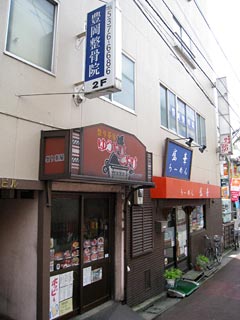
Toyooka Seikotsu-in is located on the second floor of a small bulding in a side alley of Meidai-mae station. On the ground floor there are a cheap izakaya and a ramen shop.
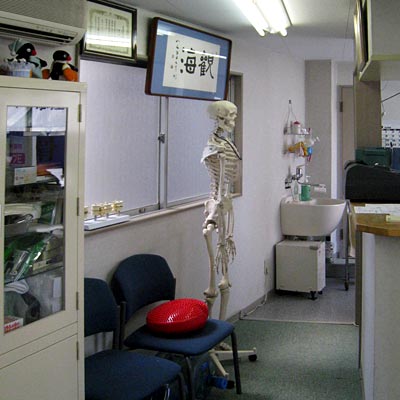
Sample skeleton is a necessary interior decoration for Judo therapist. License hung high on the wall guarantees the quality of this clinic.
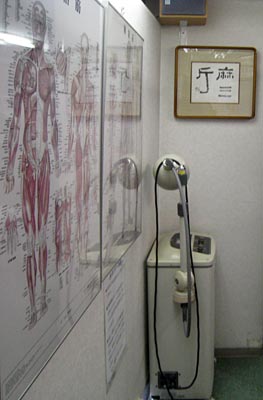
Mustle illustration is also a must as decoration.
Near the end of last year, when I complained about my backache to my old friend, he recommended me to go to an osteopath. Japan has a special tradition of osteopathy and we call osteopaths "hone-tsugi" (bone setter) in colloquial Japanese. They have to acquire a state license and their treatment is covered by public health insurance, because it is understood to be proper medical treatment.
It is interesting to know that "hone-tsugi" is officially called as "judo therapist" or "judo therapy clinic". Judo is a representative Japanese marshal art and now an Olympic event. Therefore judo is generally known as sport and many people might suspect why judo has to do with osteopathy or medical treatment.
Judo or jujutsu was originally a comprehensive combat technique. Therefore it is quite natural that judo included both techniques to defeat enemies and to cure the wounded. It was also necessary to cure injury which occurred during training. Thus old masters of judo or jujutsu were also good osteopaths. After Kanou Jigoro (1860-1938) elaborated judo from jujutsu and established Kodokan in the Meiji period (1868-1912), judo masters appealed to the government to officially permit them to do judo therapy so that they could earn their living. The government accepted their request and started to issue judo therapist license in 1920.
According to the latest legislation, judo therapists must study more than three years at a school recognized by the government and obtain the knowledge and technical skill necessary to be a judo-therapist, including knowledge of anatomy, physiology, pathology and hygiene. The equivalent western technique for judo-therapy can be chiropraxis, but judo-therapy is essentially based on the concept of Japanese and Oriental medicine.
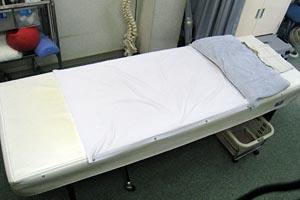
I am always treated on this bed.
"Hone-tsugi" clinics nowadays prefer to call them "seikotsu-in" (bone setting clinic). Of course, in addition to "seikotsu" there are various traditional treatment methods in Japan, such as seitai (osteopathy), shinkyu (acupuncture and moxibustion), shiatsu (finger-pressure therapy) and anma (masseuse). Seitai is similar to seikotsu and many Japanese people mix up these two. I cannot tell the difference well, but at least seitai is not stately recognized. Seikotsu therapy is said to be based not only on traditional Japanese medicine but also European medical theory. There is also a rough division of labor between seikotsu and seitai; while seikotsu handles in particular physical injuries of bones, muscles and tendons, seitai concentrates more on the imbalance in the body including internal problems.
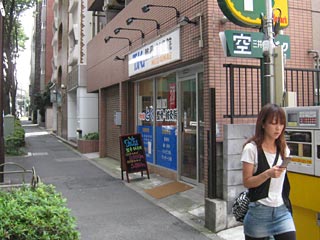
The nearest competitor has an acupuncture division.
After I started to receive seikotsu treatment, I came to notice that there are many signboards of seikotsu-in. Roughly speaking are there 3 or 4 judo therapy clinics near every railway station. This indicates that many Japanese people are suffering from chronic pains and they cannot cure them with Western medicine.
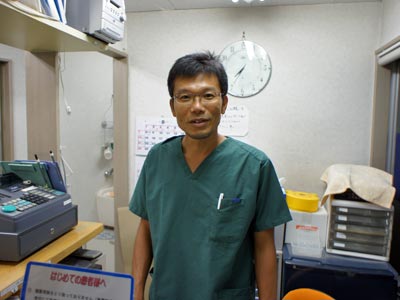
Toyooka-sensei is a friendly therapist, but skillful in handling chronic body pain.
I got extremely irritated by this statement and tried to strengthen the muscles around my left hip joint by myself. It succeeded. But, the treatment and advice of the seikotsu therapist were very effective. In addition to the bi-weekly treatment, he gives me guidance for muscle training which I do two or three times a week. Now I do not feel disturbance in my hip joint and I am also happy to have been able to decrease my weight by 5 kg in half a year.